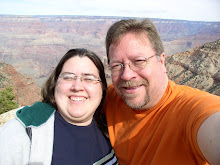Each component works separately on it's own; but, when used together, it will take your classroom to the next level of quality. Today, let's look at collecting evidence and observations. This is the most important, in my opinion, to the entire process. When collecting evidence, and observations are included as evidence, you want to make sure you are able to use what you have collected to represent a true assessment of a child's skill.
Observations must be made without emotion. A written observation should be a written description that could represent a picture:
example: Seth picked up a pencil with his right hand using a pincer grasp.
He then used the pencil on the paper in front of him and began to write at the top left corner. He wrote S then e then an h. He looked at what he wrote then put a horizontal line across the vertical line of the h.
Seth turns to the teacher and exclaims, "Look teacher. I wrote my name."
Please note, I didn't write the teacher's response. It doesn't matter what or how she responded to this observation. Also note that I kept emotions out of it. Here is an example of an observation I would not accept.
example: Seth is very happy today because he can write his name. He excitedly gets a pencil and begins to show the teacher. He writes Seh, forgetting the t. He notices that he missed the t and tries to repair it by making a line across the h. He gets very proud of his accomplishment and says "Look teacher. I wrote my name." The teacher says "Yes you did. Good job!"
We have no way to be inside Seth's head to know that he truly is happy or excited. Maybe he feels pressure from the parents to show off this skill and is a very good actor in showing his emotions...maybe not. Either way, you need to keep the emotions out of it for it to be true evidence to be used in the assessment.
There are many types of evidence to collect: observations, video clips, pictures, voice recordings, one sentence notes, documented conversations with parents, writing samples, art work, and other creative types of things that you may come up with.
When taking art work or writing samples from the children, be sure you clearly label when it was done on the back and any other notes (which hand did they use, did they make any comments about it while they were doing it, etc...).
When taking evidence from a parent, be sure to clearly write down what was said: "Mom came in on 5/12/08 and said that Kayla tied her shoes all by herself when she got dressed this morning. This is the first time mom has mentioned this. Kayla hasn't tied her shoes at school yet."
Make sure to keep this evidence in a well organized place. We keep them in 3-ring binders for the children to look through as well. We put everything in the books according to date. I am hoping to also move to a computer system where evidence will be able to be scanned or typed into a file for each child. In each file, there would also be sub-files for different categories of indicators: math, social, self-recognition, etc...
You want to have a variety of evidence collected. Don't just have all picture documentation, or all written observations. You want to have a good variety. I also have my teachers keep a checklist (actually two) to make sure that everyone is getting evidence collected for. The first one they turn in weekly to me that just shows me the type of evidence that has been collected (pictures, videos, written...). The second one they do monthly to make sure that at least two things have been collected per child in the month.
If you keep up with your evidence collecting, it will make your job so much easier when it comes to completing the assessments. We will talk about that later this week.
Please note: If you do not utilize the DRDP assessments, these notes will work for any assessments you do. This includes, but is not limited to, Denver Assessments, Galileo, PQA, ELSA, COR, and many more. They can all be utilized in pretty much the same way to study children in a natural environment to see what they can or can't do without testing them.
What do you use?

No comments:
Post a Comment